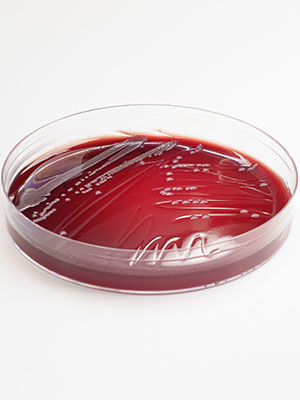After analyzing 5,000 E. coli infections from Norway and Great Britain from 2001 to 2017, the results are unequivocal.
There is a clear causal link between the use of the antibiotic type Cephalosporins and an increased incidence of the multiresistant E. coli clone ST131-C2.

Professor Jukka Corander and his colleagues have made an important breakthrough in the understanding of how the use of antibiotics can make us end up with more dangerous and resistant bacteria. Photo: Mona Mehus, University of Oslo
In 2005, researchers showed for the very first time that the use of one type of antibiotic coincided with the occurrence of serious bacterial infections that were resistant to the same antibiotic.
The report included data from 26 European countries over a six-year period and received a lot of attention, because it put forward a hypothesis that the use of antibiotics drives increased carriage of antibiotic resistant bacteria in the population.
- Now, for the first time, we have confirmed this hypothesis. There is a clear connection between antibiotic use and the increase in the resistant variants of bacteria in a population, explains the professor in charge of the study, Jukka Corander from the University of Oslo.
New, better and cheaper DNA technology
At the time Goossens and the other authors of the 2005 study made their findings, bacterial genomics was still in its infancy. Back then, it was only eight years since the first bacterium had its entire genome mapped by science.
Since then, the technology behind DNA sequencing has made huge leaps, and we can now map out a bacterial genome much faster and cheaper than before. In the past, this could take months and years and cost huge sums of money.
This technological development, combined with data from two world-leading national surveillance systems for resistance in microbes, has given researchers at the University of Oslo, UiT The Arctic University of Norway, the University of Cambridge and the Sanger Institute in Cambridge the opportunity to perform big data analyzes in order to determine the causal relationship between antibiotic use and antibiotic resistance.
16 years of data

This time, the researchers created two parallel data sets of blood poisoning with E. coli bacteria over the course of almost two decades. One for England in the period 2001-2017, and one for Norway between 2002 and 2017.
Together, Corander and his colleagues have DNA-sequenced more than 5,000 cases of blood poisoning, in order to get the most detailed overview possible of the genetic variation and antibiotic resistance in both the British and the Norwegian E. coli variants.
- By comparing the results of the DNA analyses with the frequency of antibiotic use in the two countries, we were able to determine for the first time which types of antibiotics are particularly important for the emergence of specific E. coli variants with antibiotic resistance.
With the help of extensive computer simulations, the researchers were able to examine how different levels of Cephalosporin use are linked to how much progress a bacterial variant has in the general population.
- Our conclusion is that more extensive use of the antibiotic type Cephalosporins in England than in Norway has led to a higher incidence of infections by the multiresistant E. coli variant ST131-C2 in British society. This variant is a concern for infectious medicine, because it is multidrug-resistant and significantly more virulent than other variants. It also causes more infections, as we showed recently in another study.
Recommends national monitoring systems
The study illustrates how important it is to have national surveillance systems for antibiotic resistance. By means of analyses of representative data material over a number of years, it is possible to draw definite conclusions about the importance of the various factors for the development of antibiotic resistance.
- When we combine bacterial samples from various monitoring systems with advanced statistics and the latest technology for DNA analyses, research can contribute to important understanding in the fight against antibiotic resistance, Jukka Corander asserts.
About the study
The researchers have taken as a starting point more than 5,000 E. coli samples from national monitoring systems in Norway (Norwegian monitoring system for antibiotic resistance in microbes, NORM) from 2002-2017, and in Great Britain (British Society for Antimicrobial Chemotherapy, BSAC) from 2012-2017, combined with published data from Great Britain in the period 2001-2011.
The work has included researchers from the University of Oslo, UiT The Arctic University of Norway, Turku University Hospital, Ninewells Hospital and Medical School in Scotland, the University Hospital of North Norway, Imperial College London, the University of Birmingham, and the University of Cambridge.
The work was funded by the Norwegian Trond Mohn Foundation through the AMR BATTALION project, Marie Sklodowska-Curie Actions and the European Research Council (ERC). The genome sequencing was done at the Wellcome Sanger Institute in the UK.
Contact information
Scientific reference
- Pöntinen, Anna K. and Gladstone, Rebecca A. and Pesonen, Henri and Pesonen, Maiju and Cléon, François and Parcell, Benjamin J. and Kallonen, Teemu and Simonsen, Gunnar Skov and Croucher, Nicholas J. and McNally, Alan and Parkhill, Julian and Johnsen, Pål J. and Samuelsen, Orjan and Corander, Jukka, "Β-Lactam Antibiotic Use Modulates Multi-Drug Resistant Clone Success in Escherichia Coli Populations: A Longitudinal Multi-Country Genomic Cohort Study."
- Tommi Mäklin, Harry A. Thorpe, Anna K. Pöntinen, Rebecca A. Gladstone, Yan Shao, Maiju Pesonen, Alan McNally, Pål J. Johnsen, Ørjan Samuelsen, Trevor D. Lawley, Antti Honkela & Jukka Corander, Nature Communications volume 13, Article number: 7417 (2022): "Strong pathogen competition in neonatal gut colonisation"






